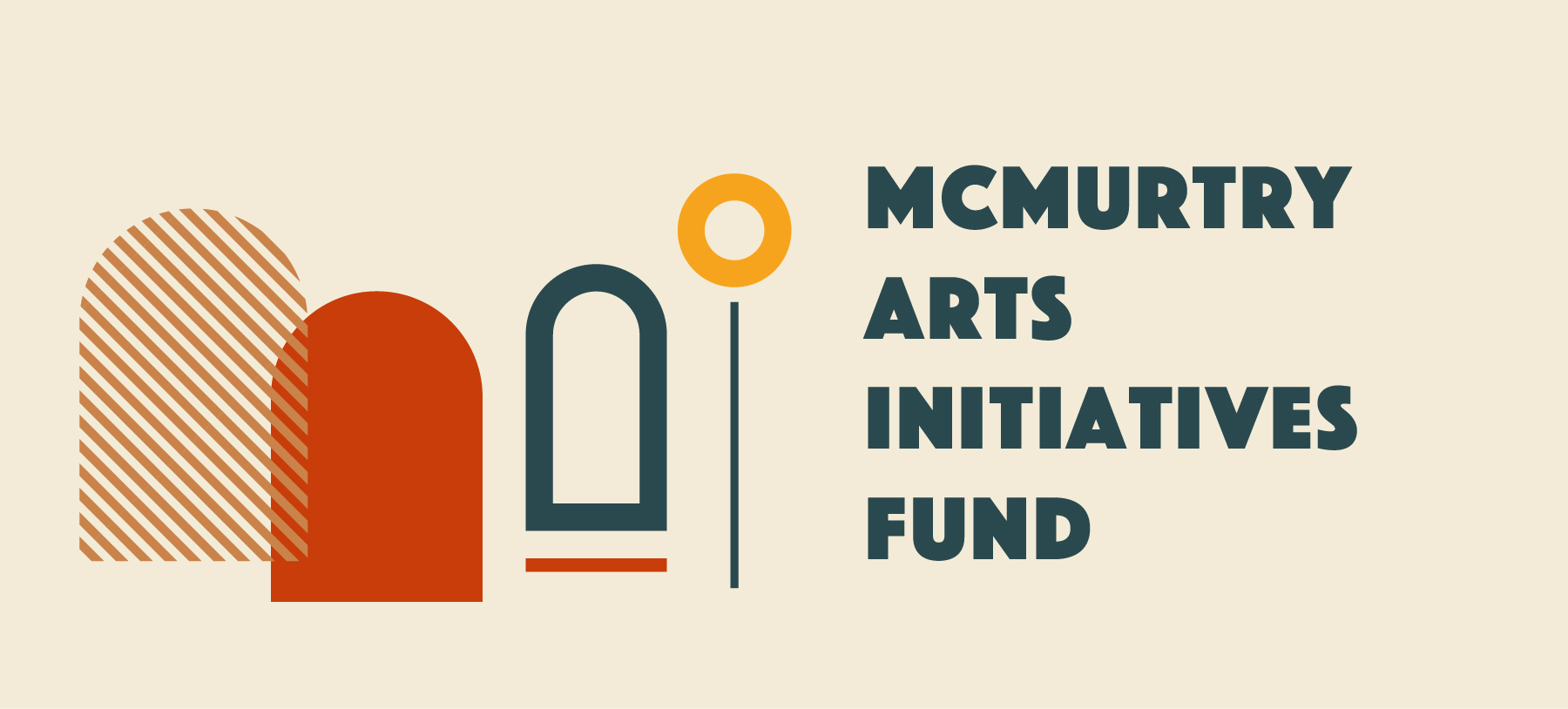
Burt McMurtry Arts Initiatives Fund
The Burt McMurtry Arts Initiatives Fund offers support to faculty-initiated interdisciplinary projects that test new directions and possibilities in the arts at Stanford.
Applications Open on March 1, 2024 for 2024-25 Cycle
2023-24
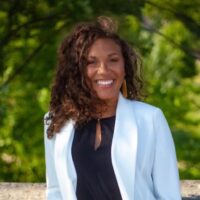
Katie Dieter, Reimagining Black Diasporic Identity through the Arts
Through participation in the 7th Annual Rex Nettleford Arts Conference at the Edna Manley College of the Visual and Performing Arts (EMCVPA) in Kingston, Jamaica, African & African American Studies (AAAS) Creative Honors students engage with workshops, art exhibitions, and panel discussions concerning interdisciplinary arts in the Caribbean. The students will also participate in culturally immersive experiences in Kingston that showcase the country’s rich artistic traditions. Led by Dr. Katie Dieter, students explore meanings of Black diasporic identity in the Caribbean through a Black Studies lens. The culmination of the trip includes a collaborative panel between AAAS and EMCVPA titled “Re-imagining Black Diasporic Identity through the Arts” in the Winter quarter to showcase their experiences and share a digital archive of the trip with photography and/or other creative projects developed by the students.

Scott Fendorf, A Theatrical Inquiry into Environmental Justice Implications of California Wildfires
This project uses performing arts techniques to initiate a conversation and raise awareness about the environmental justice implications of California wildfires. We will work with local communities in Northern California to identify environmental justice problems caused by California wildfires for inmate firefighters and farm workers. Through collaboration with these communities, we will conduct theater workshops to create and perform a play at Stanford University that explores the personal experiences and stories of inmate firefighters and farm workers disproportionately impacted by California wildfires. This play will act as a catalyst for a series of conversations, talkbacks, and panels, including experts, local groups, and policymakers, to promote healthy discourse around the environmental justice implications of California wildfires. These approaches will help to create new directions for theater to address real-world problems such as environmental injustice, contributing to the discourse regarding the impact of the arts in future extreme environments caused by the climate crisis.
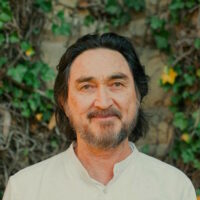
Stephen Murphy-Shigematsu, Grief and Culture
Grief as sorrow experienced after a loss is universal but is deeply affected by culture. Grief goes beyond what has happened to us and is connected to what we fear, what we love, and what we aspire toward. It is therefore intimately tied to not only specific incidents but also to the ongoing trauma that is part of systemic oppression and complicated by race, ethnicity, gender, and sexuality.
One way of addressing grief is to reimagine our relationship to power, accountability, and boundaries that are expressed differently cross-culturally. We are all impacted by systemic trauma that is perpetuated within our society through structural inequalities and expressed in our interpersonal relationships. Attending to our own grief in community context enables us to responsibly engage with others from a position of innate wholeness.
The arts are increasingly recognized as an integral source of healing that is sorely needed in a world ravaged by violence and disease. In this project, women of color artists will lead small group sessions in experiential learning and healing exercises through their particular art form. Our project responds to the need in the Stanford community for safe places of refuge for those grieving, especially those who feel marginalized from mainstream places. We anticipate the creation of a beloved community on campus.
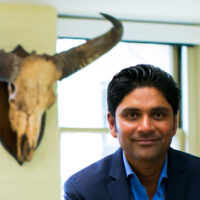
Krish Seetah, Can Art Express Our Loss for Biodiversity?
This project integrates STEM and Arts, providing an opportunity for reflection for a broad section of our campus community. The bison's original range extended from Alaska south to the grasslands of Mexico and stretched from the Great Basin of Nevada to the Appalachian Mountains. A 3D printed skeleton will be mounted and handed over to the student body, equipped with a GPS tracker, with the aim that a (Big Blue) Bison will roam across campus!
This piece will encourage thought on sustainability and conservation, as well as the indigenous groups that depended on these animals in the past, and what the elimination of such pinnacle species mean for our society. Moreover, the piece asks: do we want to have phials of DNA and image files to be the legacy we leave of our natural world? With the launch of the new Stanford Doerr School of Sustainability, this project responds to current activity around issues of sustainability that are now at the forefront of Stanford’s recent efforts.
2022-23
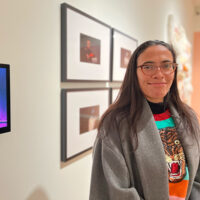
Gigi Otalvaro, “Kinesthetic Delight: Playful Mindfulness in the Museums”
Gigi Otálvaro, who leads LifeWorks, a program for integrative learning within Stanford Living Education, was awarded a grant for Kinesthetic Delight: Playful Mindfulness in the Museums, as part of their new initiative Art and Wellbeing Engagement (AWE). A contemplative community gathering at the Anderson Collection celebrating the power of art, mindfulness, and play, the event will highlight the essential role that art can play as a public health intervention to support mental health and wellbeing.
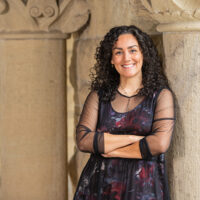
Rose Salseda, “El Centro: The Heart of Stanford’s Latinx Art Legacy”
El Centro: The Heart of Stanford’s Latinx Art Legacy documents, shares, and preserves the dynamic and vital history of Chicana/o/x and Latina/o/x art at the university student center through research, oral history interviews, and an exhibition of its art collection, casting light on how small centers like El Centro make significant contributions to the art world.
2021-22

Elizabeth Hadly, “Hearing the Anthropocene: A Synergy of Science and Music to Reveal Recent Human Impacts to Nature”
The first phase of a collaboration between the lab of Stanford Biology Professor Elizabeth Hadly and composer, programmer, and Stanford alumnus Dr. Marc Evanstein, with the goal of creating and presenting to the public new musical works based on biological data.

Michael Rau, “The Future of Digital-Performance-Making: A Convening”
This project to host a convening on performance-making that bridges the gap between artists and academics, focusing on interdisciplinary collaborations that point towards the future of theater-making. Stanford will host a three-day convening to bring together current industry professionals, artist and academics to think through the future. The convening will also be recorded and streamed onto the internet to allow for multiple avenues of engagement.

Richard Meyer, “Anita Steckel: Feminist Art and Sexual Politics”
Anita Steckel: The Feminist Art of Sexual Politics showcases the vibrant work of American feminist artist Anita Steckel (1930-2012) whose audacious art addresses issues of gender inequity, objectification, female desire, and racial injustice. Some 60 works spanning a period of nearly 50 years will be on display at the Stanford Art Gallery, thus making it the most far-reaching exhibition of the artist’s work to date.
2020-21

Kim Beil, "Talking in the Library: Conversations on Photobooks"
A series of interviews with contemporary photographers about photobooks in the Stanford Libraries collections.

Lochlann Jain, “The Lung is a Bird and Fish”
This project offers a series of 10 original drawings alongside creative writing that explores, responds to, and presents Jain's research into the history of the discovery of air, and specifically, of respiration.

Jamie Meltzer, "ChocolateHeads Dance and Documentary Film Workshop"
In collaboration with Dance lecturer Aleta Hayes, this project functioned as a prototype for a full-length course exploring the possibilities inherent at the intersection of dance and film, and will engage both dance and graduate film students in the creation of new work.

Bissera Pentcheva, “En-chanted Images of Ste. Foy at Conques”
By activating the performative icon in the architectural space, "En-chanted Images of Sainte Foy" creates an alternative way for modern audiences to interact with the art of the past--not just an intellectual engagement with narrative and meaning but also a sensorial one--by entering fully into the experiential conditions of this art.
2019-20

Hideo Mabuchi, “Intermateriality:Redox”
This project comprises the documented making of an art installation that includes ceramics, joined wood, woven/dyed textiles, knotted and stained rope, and photo-micrographs. The proposed project will provide a case study about the connections between STEM and the arts/humanities visible to the campus community, seeding broader conversations and prompting future work.

Diane Frank, “Dances in Conversation w/ Jim Campbell & the Architecture of the Anderson”
This dance/music/art project, tentatively titled “Snap Sets & Continuous Forms 2.0” is a multi-layered site-specific performance project. The retrospective of works by light artist Jim Campbell, installed throughout the Anderson Collection, and the architecture of the museum building itself, will be the paired inspiration and platform for formal construction of the dance and music.
Due to COVID-19, the presentation of this project has been postponed. Frank hopes to resume planning for this component once the Anderson Collection is able to reopen.

Young Jean Lee, “iPads and iPens for Playwriting”
Young Jean Lee has been working as a professional playwright and director for the past sixteen years, and in 2018 became the first Asian-American female to have her play produced on Broadway. In her classes, students develop full-length plays, with an emphasis on learning how to create collaborative communities to support the further development of their plays after the class is over. Lee is utilizing grant funds to purchase iPads to facilitate real-time edits and annotations.
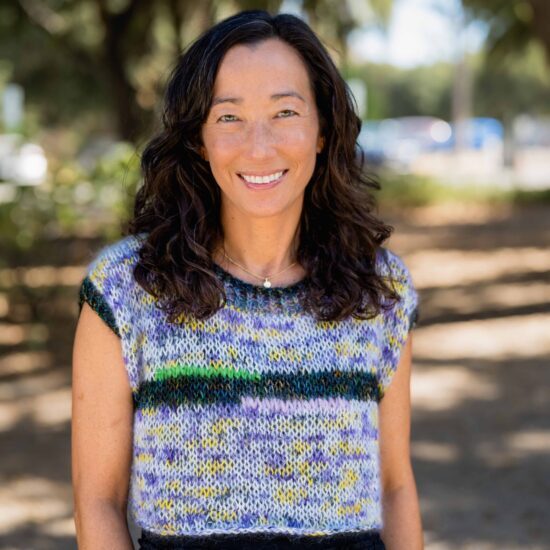
Contact:
Ellen Oh
Director of Interdisciplinary Arts Programs
Office of the Vice President for the Arts
ellenoh@stanford.edu

